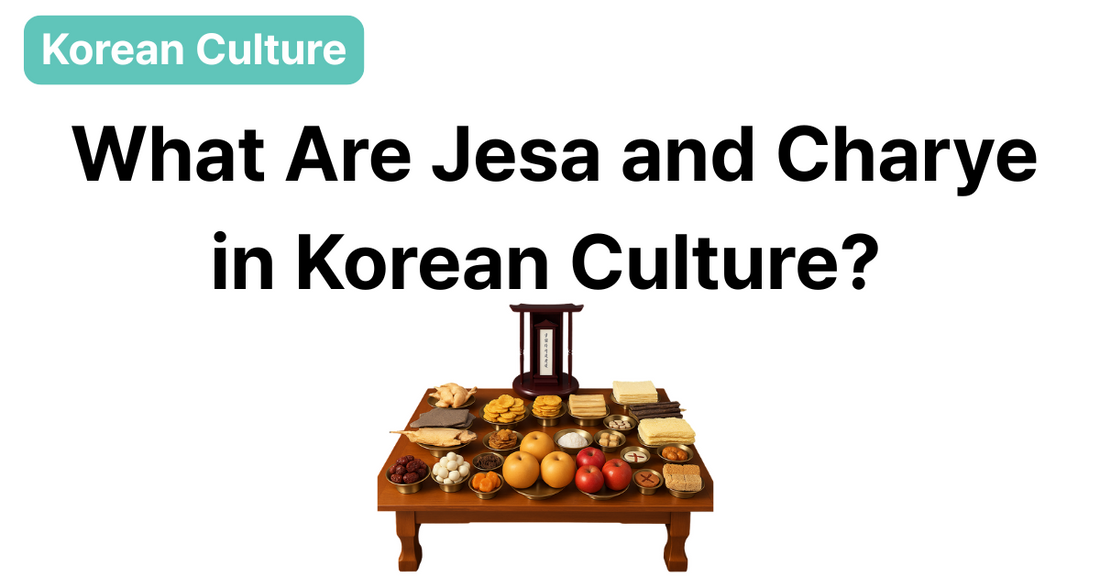
🕯️ Honoring Ancestors: What Are Jesa and Charye in Korean Culture?
Share
In Korea, remembering ancestors isn’t just about the past—it’s a living tradition that shapes family bonds and reflects deep cultural values.
One of the most meaningful ways Koreans honor those who came before them is through Jesa (제사) and Charye (차례)—ceremonies held with reverence, food, and silence.
Let’s take a closer look at how these rituals work, and why they still matter today.
🙏 What Is Jesa?
Jesa (제사) is a Korean memorial rite performed to honor deceased family members—usually held on the anniversary of their passing or during holidays like Lunar New Year (설날) and Chuseok (추석).
It's a moment of quiet remembrance.
Families gather to prepare and offer food, bow respectfully, and reflect on the lives of their ancestors.
There are different types of Jesa:
- Gije (기제): memorial for individual ancestors (on death anniversaries)
- Charye (차례): performed during major holidays
- Sije (시제): communal rite for distant ancestors in clans
While the religious meaning may vary across families, the core message is the same:
gratitude, respect, and connection to lineage.
🍱 Table Setting and Symbolism
At the heart of Jesa is the ceremonial table (제사상)—beautifully arranged with various foods.
Each food has meaning, and the layout follows specific traditions:
Common offerings:
- Rice, soup, and side dishes
- Fruit (especially apples, pears, persimmons)
- Meat or fish
- Alcohol (usually rice wine)
- Traditional snacks like tteok (rice cakes)
📌 The placement of items matters:
- The front row is for soup and rice.
- The back rows hold fruits, vegetables, meats.
- Utensils are placed as if the ancestor is sitting at the table.
This isn’t just about food—it’s a symbolic meal prepared with sincerity and love.
🌱 Changing Views Among Younger Koreans
Today, Jesa practices are evolving.
Many younger Koreans:
- Choose simpler forms of remembrance
- Hold more casual family gatherings
- Or focus on personal, quiet reflection instead of formal ritual
Still, many appreciate the meaning behind the tradition—even if they adapt how it’s practiced.
Some see it as a way to stay connected to family roots in a fast-changing world.
💡 Why It Matters
Jesa and Charye are not just rituals—they’re reflections of Korean values:
- Respect for elders
- Gratitude for the past
- Togetherness through food
Even if you're not Korean, learning about these traditions offers insight into how a culture turns remembrance into something tangible and beautiful.
📩 Want to learn more about Korean traditions?
Sign up for our newsletter for cultural insights, simple Korean phrases, and stories that help you understand Korea—one meaningful word at a time.
Easy Korean Chat — Explore Korea through language, food, and heartfelt moments. 🌿
